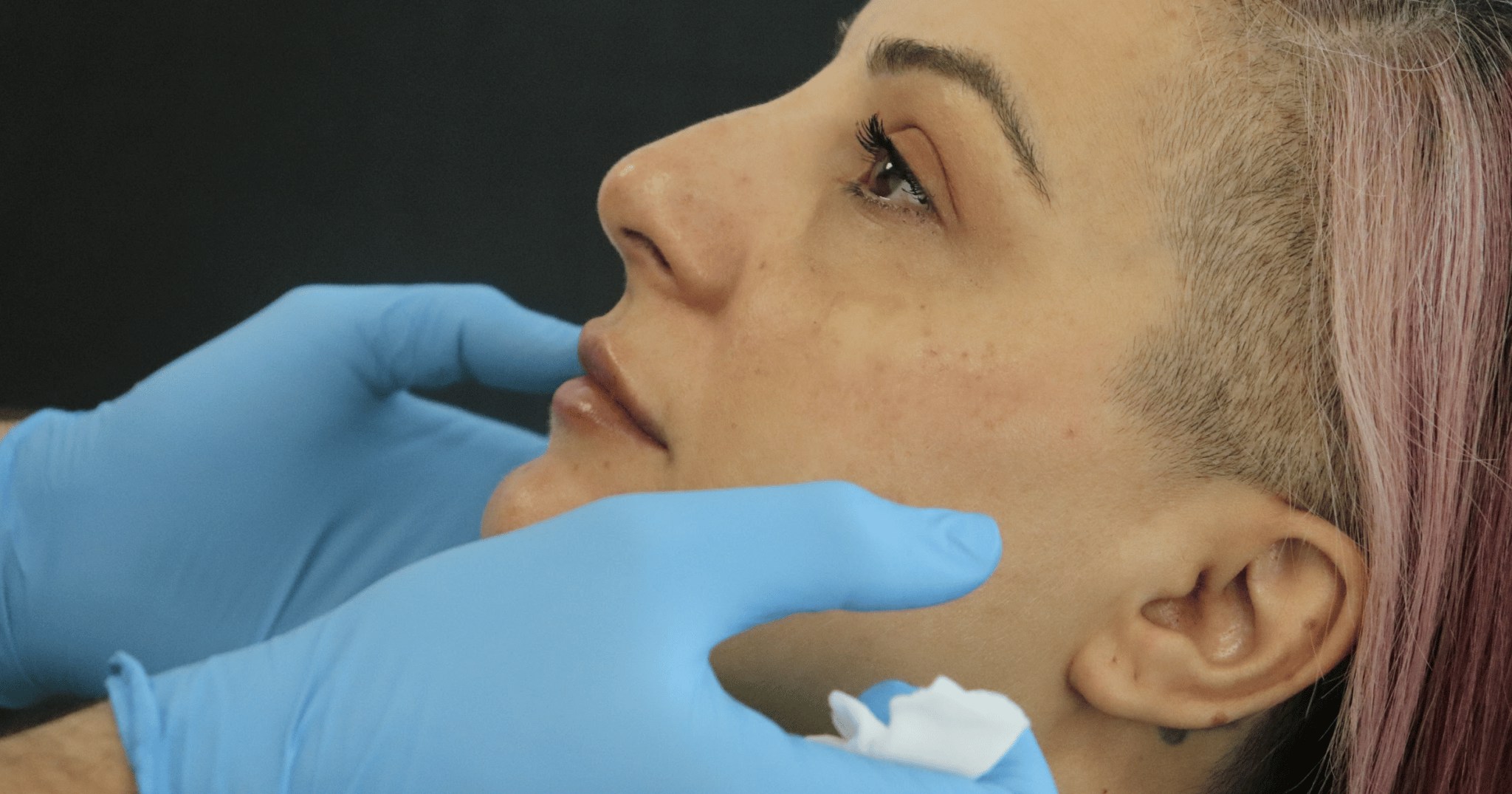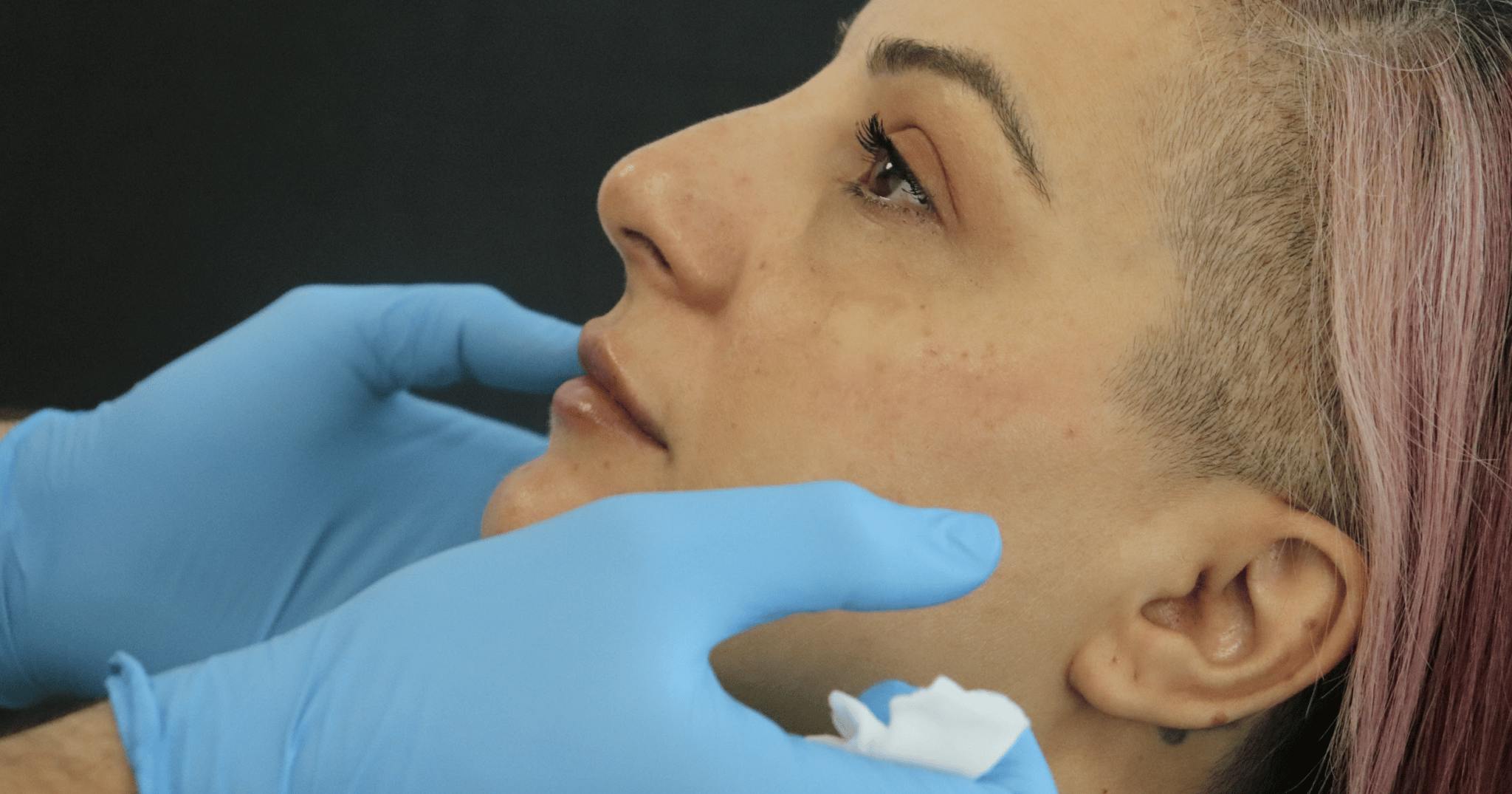Advice on dealing with Palpable Filler

A recent query sent to us via social media asked for advice on palpable filler four weeks post treatment. The patient had received nasolabial fold filler initially.
Describing them as “slightly palpable linear threads”, the concerned injector noted that they were “not visible”. They wondered if that meant they required treatment.
We spoke to cosmetic doctor and clinical trainer, Dr Carol Mastropierro to get to the bottom of this aftercare conundrum...

WHAT IS "PALPABLE FILLER?"
Palpable filler is product that can be felt on manual examination of treated areas.
WHAT DOES THIS SITUATION REGARDING SLIGHTLY PALPABLE FILLER INVOLVE AND WHAT IS THE LIKELY CAUSE?
“As space-occupying implants, when using hyaluronic acid fillers, we need to be mindful of the following,” advises Dr Carol.
“Thickness of product we use (eg. considering thick lifting fillers vs thinner malleable fillers)
Where we place it (eg. depth and breadth of the face)
What instrument we use (eg. needle or cannula)”
She explains, “An ideal filler rapidly integrates with the surrounding tissue, while remaining undetectable. It should achieve the desired facial aesthetic quickly.”
“Any filler deposition, particularly initially, can leave a trace on the facial surface,” she notes. “This may be visible, palpable or both visible and palpable.”
“The likelihood of this increases if the product has a high G prime rating (ie thicker), is used superficially and/or is used in large volumes.”
HOW DID THIS OUTCOME OCCUR?
“Visible filler can often be more displeasing for the patient,” notes Dr Carol. “At the time of treatment, visible filler or obviously palpable filler can be managed under the sterile conditions it is delivered in.”
“This involves firm – yes, firm! – massage to flatten and dissipate filler, or sculpting. The latter involves moving filler to the desired area.”
She explains, “For example, lip lumps can be massaged using gauze soaked in Clinisept. You may choose to use a topical product to aid slippage for massage, such as Savlon.”

HOW SHOULD INJECTORS DEAL WITH CASES OF PALPABLE FILLER?
“After 2-4 weeks, if a patient returns with visible or palpable filler and no other associated factors to suggest a complication, we can still firmly massage to disperse product,” says Dr Carol.
“Gently heating the skin with a warm compress can aid the procedure. This type of massage can be taught to the patient with instructions on how often to do it until they return for review again, after 2 weeks.”
“If there is persistent filler after 4-6 weeks, you can consider a controlled dissolution of your hyaluronic acid filler with hyaluronidase,” she advises. “Use a low concentration solution to control the amount dissolved.”
PREVENTING AND MANAGING PALPABLE FILLER ISSUES
“In order to prevent palpable filler issues and to increase your confidence in managing any that do arise in future, I have the following recommendations,” says Dr Carol.
“Make sure you’re familiar with your anatomy and filler products. Product-specific training helps, as well as understanding the rheological science behind fillers” she notes. Harley Academy trainees will find this covered in their Level 7 Diploma in Botox & Dermal Fillers eLearning.
“Gain as much practice as possible in filler product selection and delivering it to the correct area,” she stresses. This can be done via Level 7 mentoring or during Core Training in Botox & Dermal Fillers sessions.
“I also highly recommend Level 7 students take a deep dive into their eLearning section on hyaluronidase,” counsels Dr Carol. Adding, “Essentially, the more cases you follow up and see, the more you will reflect and learn on how to approach visible or palpable filler, and learn how to prevent it.”
In conclusion, Dr Carol’s main take home messages on this are to:
Use small amounts of appropriate filler in the correct areas
Massage or mould early
Consider hyaluronidase for persistent visible or palpable filler.

INJECTABLES TRAINING COURSES FOR HEALTHCARE PROFESSIONALS
If you’re a doctor, dentist, nurse or midwife looking for an in-depth education in cosmetic injectables, with plenty of hands-on mentoring, you’re in the right place.
We offer a range of botulinum toxin and dermal filler training courses to suit newcomers through to more advanced aesthetics practitioners.
For personalised recommendations on the best aesthetics training course for you, book a call with Christine Slater, our courses advisor.
All information correct at the time of publication
Download our full prospectus
Browse all our injectables, dermal fillers and cosmetic dermatology courses in one document
By submitting this form, you agree to receive marketing about our products, events, promotions and exclusive content. Consent is not a condition of purchase, and no purchase is necessary. Message frequency varies. View our Privacy Policy and Terms & Conditions
Attend our FREE open evening
If you're not sure which course is right for you, let us help
Join us online or in-person at our free open evening to learn more
Our Partners













STAY INFORMED
Sign up to receive industry news, careers advice, special offers and information on Harley Academy courses and services

